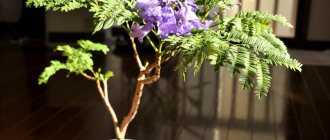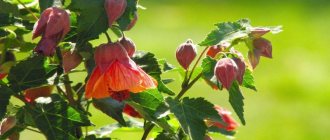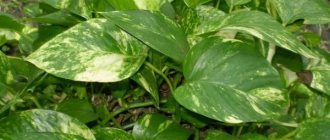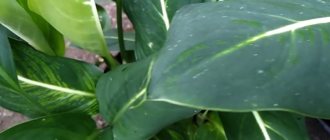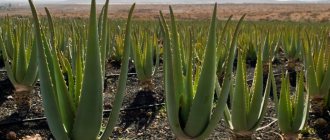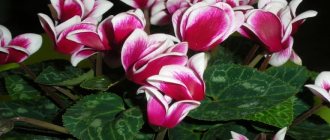What temperatures can oleander withstand?
Common oleander is able to tolerate a short-term decrease in temperature from - 5 to - 10 ° C. However, in general, winter temperatures should not be below 5 °C. When the temperature rises to 10-13 C, shoots begin to appear, but the optimal temperature for growth is 15-25 ° C.
Interesting materials:
How to enable on-screen keyboard on Windows 10? How to enable electronic keyboard on Windows 7? How to enable photo thumbnails in Windows 10? How to enable the front camera on Windows 10? How to enable hyper v on Windows 10? How to enable or disable Hibernation in Windows 10? How to enable kernels on a Windows 7 laptop? How to enable processor cores on Windows 7? How to enable Game Mode in Windows 10 1803? How to enable game mode in Windows 10 on a laptop?
About caring for oleander
Temperature: Oleander is a heat-loving plant, so in the spring and summer, temperature fluctuations from 20 to 27 ° C are optimal. Oleander needs an influx of fresh air, so the room in which it is grown must be regularly ventilated. However, this shrub does not tolerate stuffiness and heat, so you should be careful when placing it on a south-facing window in the summer. In winter, the plant needs a cool winter, at temperatures from 2 to 15 °C, but this is not a necessary condition for growing oleander; at normal room temperatures in winter it also feels great, the only thing it doesn’t like is being placed near heating devices.
Lighting: The shrub needs bright sunlight. Windows with southern and eastern orientation are perfect for him. When choosing a location, keep in mind that northern windows are absolutely not suitable for growing oleander, since there it will suffer from a lack of sun, which will affect not only its spring appearance (shoots will stretch out, leaves will fade, fall off), but also flowering (lack of flowering , the buds fall off and do not open). In summer, the oleander will not refuse to be placed outdoors in the garden or on the balcony; the place should be well protected from gusts of wind and precipitation; fluctuations in day and night temperatures will only have a positive effect on the plant. In winter, it is also important to provide the oleander with the necessary amount of sunlight, otherwise it may not bloom next season.
Watering: Oleander needs regular moderate watering, it tolerates drought well, but it needs moist soil to grow quickly. In spring and summer, it is best to water the oleander abundantly, immediately after the top layer of soil has dried, especially if the shrub is of decent size. On especially hot days, a pot with a bush can be placed in a basin filled with water in order to saturate the earthen ball with moisture as much as possible. In winter, watering is reduced in accordance with the temperature; the lower the temperature, the less watering. Watering is carried out 2-3 days after the top layer of soil has dried. For irrigation, use settled water, slightly heated.
Air humidity: Oleander is not picky about air humidity; in summer, spraying is not necessary; in winter, if the temperature remains normal and not reduced, to maintain its decorative appearance, it is necessary to spray the plant 2 times a day, since the operation of the heating system can significantly harm the oleander. Spray the oleander with water at room temperature, always settled.
Crown formation: Pruning is important for oleander; both the decorative appearance of the shrub and the splendor of flowering depend on its quality, since buds form only on annual shoots. Thanks to pruning, young plants branch better and acquire a beautiful lush crown, which can be given any desired look and the height of the plant can be adjusted.
Oleander is pruned immediately after flowering, most often in late summer or early autumn. During pruning, the scissors must be held at an angle; all branches of the bush are shortened by about half, or more than half if this is necessary to give shape.
Fertilizers : Apply during the period of active growth and flowering in spring and summer. Preference should be given to complex fertilizers for ornamental flowering plants. Fertilize the oleander half an hour after watering every 2 weeks. Oleander also responds well to organic fertilizers, but it is better to use them only when the shrub is grown outdoors.
Soil: Shrubs are grown mainly in a universal substrate, to which humus and sand are added for nutritional value or vermiculite to make the soil light. A thick layer of drainage is required at the bottom of the pot.
Transplantation: Carry out in the spring using the transshipment method, the optimal time is considered to be May - early June. Young plants need to be replanted annually, adults only as needed, when the roots have mastered the entire earthen ball and begin to look out of the drainage holes. When transplanting adult specimens, the old roots can be slightly shortened. A pot is selected that is not much larger than the size of the previous one. If replanting is not carried out this season, the top layer of soil should be replaced with a new one.
Pests: The shrub can be damaged by scale insects, mealybugs, spider mites and aphids.
Types of oleander
There are three known types of oleander - common, Indian and fragrant. In temperate climates, only common oleander is grown, which is kept indoors, since the shrub does not tolerate low temperatures. The common oleander comes in many varieties, varying in size and color of the inflorescences. For example, the oleander variety “Cardinal” has single-double burgundy flowers, and the variety “Variegata” has double yellow inflorescences. Indian oleander obviously grows in India and China and is not much different from its counterparts. The fragrant oleander, native to Asia, rarely reaches more than half a meter in height, and it has single inflorescences.
Brief characteristics of oleander
Common oleander (Latin name Nerium oleander) is a plant of the Kutrov family native to Asia Minor, growing in regions with a subtropical climate. In nature, wild varieties of oleander grow in countries from the Mediterranean coast to China. Oleander is a heat-loving plant that grows in open ground in the floodplains of rivers and streams. The size of a bush growing in the wild can reach 5-6 meters. Oleander has brown branching stems, narrow leaves and large flowers. On the territory of the Russian Federation, oleander can be found in the South, where it is used in the landscape design of parks and gardens. The flowers of this evergreen shrub have a variety of colors and a pleasant aroma.
Timing and rules for pruning oleander
The main purpose of pruning oleander is to form a tree with a beautiful crown from a bush. Oleander pruning is carried out
in the fall, around the end of August each year, cutting off branches by half or more. On adult plants, you need to cut off all the long branches so that later in their place several shoots will appear, the ends of which will be overgrown with inflorescences in due time. When pruning oleander, you should not remove faded inflorescences, because they may bloom again in the spring. Oleander buds have been forming since last year, so there is no point in trimming them in the spring. Trimmed branches may be suitable for oleander propagation. Cuttings that have taken root and are growing should also be plucked to speed up the branching process.
Precautions when pruning oleander
In principle, the oleander does not need to be trimmed, but then it will take on its natural shrub shape without a large thick trunk. When the gardener for some reason does not prune the shoots and the branches grow too long, they will have to be tied to supports, which is not very convenient. Therefore, you should always prune the plant on time. The procedure for pruning the plant should be carried out very carefully: oleander is a poisonous plant; it contains oleanine, a deadly poison that can cause colic and heart problems in humans, so the gardener should wear gloves and thoroughly rinse the scissors or pruning shears after pruning the plant. Also, some toxic substances are released into the air, so it is not recommended to keep oleander in the bedroom or in other small and poorly ventilated rooms.
Repeated pruning of shrubs
Many plant growers note that it is necessary to prune oleander not only in the fall, after the shrub has bloomed, but also in the spring. Before the growing season, small shoots are removed at the root, and larger shoots are cut off by approximately 2/3. This procedure will improve the growth of young shoots, so that flower buds will be formed in their place. It is better to carry out spring pruning in March or April, after daylight hours have lengthened. It is also important to remember that an adult plant should be replanted once every two or three years, and young shrubs every year.
In large tubs of oleanders, during transplantation, according to gardeners, fragments of the root system can be removed, which will have a beneficial effect on the plant.
Diseases and pests
If not properly cared for, oleander can be affected by diseases and pests. Then you can see the deterioration of its appearance:
- oleander leaves become spotted – fungal infection (the disease spreads quickly; to prevent the plant from dying, it must be urgently treated with a fungicide and the affected parts removed);
- the buds do not open - the flower is cold (put it in a warmer place);
- oleander does not bloom - lack of light, heat, water, nutrients, improper pruning, poor ventilation (move to a bright, warm place, water, fertilize, ventilate);
- leaves fall - lack of light in autumn and winter, the plant is cold (install lighting; move to a warm place; in summer, bring it home from the street at night);
- oleander leaves dry and fall off - lack of light and moisture (move to a bright place, water);
- leaves turn yellow - improper fertilization, excess moisture (adjust fertilizing, limit watering);
- drops buds - water with cold water, the plant is cold (move to a warm place, water only with warm water);
- black spots on the leaves – fungal disease (treat with fungicide);
- the leaves fade and become smaller, the inflorescences lose their decorative effect, the buds laid in the summer do not open in the fall - there is not enough light (move to a bright place, install lighting);
- tips of leaves dry - dry air in the room (spray, place on a tray with wet expanded clay).
If the air in the room is dry, there is a lack of light, or excess moisture, the bush can be attacked by pests. Most often, the flower suffers from aphids, spider mites, scale insects, and mealybugs. They spoil the appearance of the oleander and deplete it. It is not easy to fight them, so it is better to prevent their attack in advance by adjusting the temperature and humidity of the air.
Oleander flower: care and cultivation at home
In order for such a lush bush to please with abundant flowering, it is necessary to provide the oleander with the correct growing conditions. First of all, choose a suitable place for the culture. She prefers areas where there is a lot of light and warmth. With a lack of sunlight, the crop will have very elongated shoots, and the leaves will lose their natural color. Optimal temperature indicators are up to +25°C. In winter, the bush needs coolness (air temperature should not exceed +8°C). In the summer season, it is useful to take the crop out into the open sunlight so that it can enjoy its warmth and light breeze.
Oleanders are grown in fertile soil based on leaf and turf soil, sand and humus. Garden soil is also suitable only if it has a neutral or slightly acidic reaction.
Caring for oleander at home also involves regular watering. The frequency of the procedure depends on temperature indicators. When irrigating, keep in mind that there should be water left in the pan. This will prevent the soil from drying out. In winter, watering is reduced to a minimum and carried out only when necessary.
The culture responds very favorably to showering. This procedure helps to moisturize and refresh the plant. The bush needs fertilizer once every 7 days. For this purpose, complex fertilizers that are used for flowering representatives are suitable. It is useful for young plants to revitalize the soil with mullein infusion.
Timely replanting plays an important role in the process of growing crops. It is recommended to carry out it systematically - young representatives are transplanted once a year, and adults - once every 3 years.
It is recommended to replant in the spring; there is no need to replant adult bushes; you can simply change the top soil. A mixture based on turf soil, humus, and peat, taken in identical proportions, is considered optimal.
Pruning and shaping the bush
Indoor oleander requires regular pruning. After this procedure, the crops begin to branch better, and their flowering becomes more abundant. Proper pruning helps to form a beautiful crown and regulate the size of the bush. It is recommended to perform this procedure immediately after flowering has ended.
What to do in the fall
Now is the time to prepare the plant for winter. Many people cut off shoots after flowering, but it is better not to do this. The inflorescences should be left, since at their tips there are the beginnings of new flowers for the next year. Trimming a plant before bringing it into the house may seem helpful due to space constraints, but it is not recommended.
The plant needs to stop watering. There is plenty of moisture in the air at this time, especially on September nights. Excess moisture and cold are a dangerous combination. In addition, with active watering, root growth is activated, and this should be avoided during wintering in the interests of the plant. Make the oleander “go to sleep” without wasting energy on the growth and development of shoots and roots.
By date of birth, you can calculate the optimal interior color for everyone
Contact sports are excluded: how to restore blood vessels after coronavirus
We bake a whole basket of “mushrooms”: we take a plastic bottle to help
In principle, the plant should be brought in for wintering as late as possible. Oleander is frost-resistant, can withstand down to -5 ° C, so it should be placed for the winter only in mid-autumn. Before this, you can protect the plant from excessively low temperatures by placing it on the balcony, against the wall of the house, and wrap it in fleece, because in late autumn the nights are cold, and the day is still quite warm. This way you can postpone wintering for several weeks, which will strengthen the plant and make it more resistant to disease.
